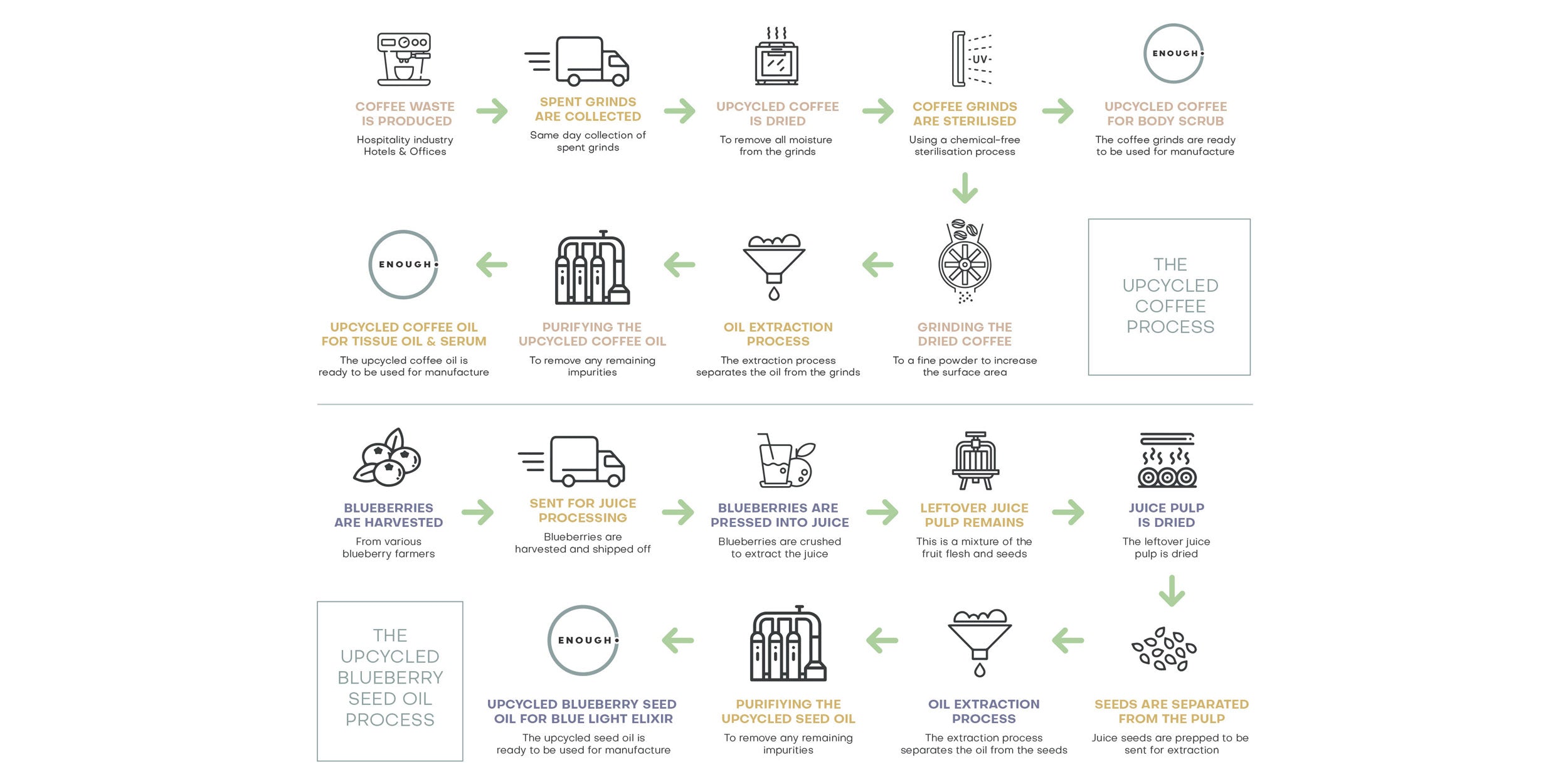Upcycled Beauty-Health

From Linear to Circular
Rethinking Beauty
The traditional beauty industry relies on a take-make-waste model, using only new resources and discarding the rest. This outdated system depletes natural resources and increases waste, making sustainability an urgent priority.

Transforming Waste into Worth
The Power of Upcycling
By repurposing byproducts from other industries, we give valuable ingredients a second life. Upcycled botanicals preserve nutrients, reduce waste, and promote sustainability, proving that beauty can be both luxurious and responsible.

Sustainable Beauty, Redefined
A Future of Less Waste
A circular approach ensures that every choice—from ingredients to packaging—minimises environmental impact. As conscious consumers, we have the power to shape a greener, more ethical beauty industry.
Giving New Life to What Would Be Lost
Byproducts to High-Performance Skincare
Upcycled beauty transforms unused natural resources into powerful, nutrient-rich ingredients.
By repurposing ingredients, we not only reduce landfill contributions but also conserve natural resources.

